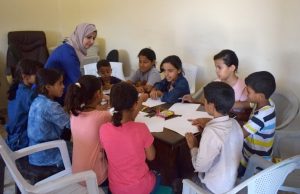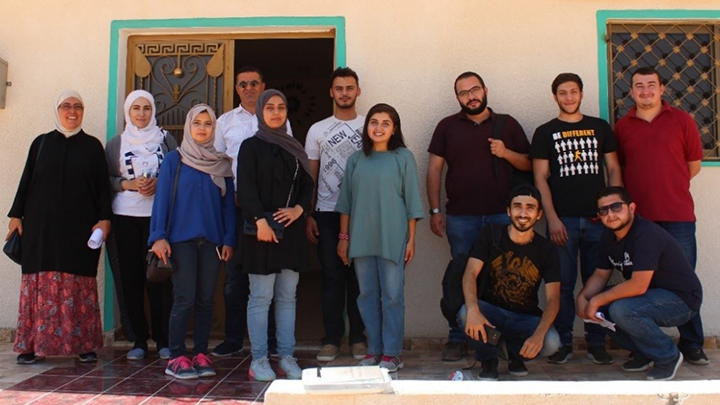28 July 2019
Dr. Fatima Al-Nammari, an Associate Professor at Petra University, Dr. Yasser, Head of Architecture Department, Odai Haddad, Engineer at Petra University, Nebras Al-Maslamani, OPOF Project Manager, and 10 Architecture students recently had a field visit to Wadi Faynan. Workshops were held with members of the local community in Faynan Museum and in the Prince Hussein Society Meeting Room in Greigra to formulate criteria for the future development of the museum. Nebras had invited a representative sample of community members to ensure a range of views were expressed. The task for the students was to draw on the discussions and requirements for the museum from the Department of Antiquities to propose how it might be developed to provide a hub for the community.

Dr. Fatima established participatory exercises to facilitate discussion. The exercises varied from asking the participants different questions about their preferences, to explaining their thoughts, knowledge, and ideas by drawing sketches. Key words expressed about the region from the women community members were: hospitality, safety, calmness, meditation, simplicity, traditions, history, nature, handicrafts, and authenticity. The children drew sketches for their favourite games and what they like to have inside the museum, so that the design of the outdoor space will cater for their interests. Ali Al Hasaseen, the Faynan Museum Curator, supported the workshop and represented the views of the Department of Antiquities.

Having listened to the discussions and been provided with accounts of previous work done elsewhere in similar participatory design projects, the students were divided into four groups. Each group was tasked with coming up with an architectural design for how the outside space of the museum might be developed to help transform the museum into a community hub, meeting the wishes of the community, the needs of the Department of Antiquities and supporting visitors to Faynan. Their designs will be drawn upon by Dr Fatima and her colleagues when formulating the proposal from OPOF WP6 to present to the Department of Antiquities at the end of the project.


